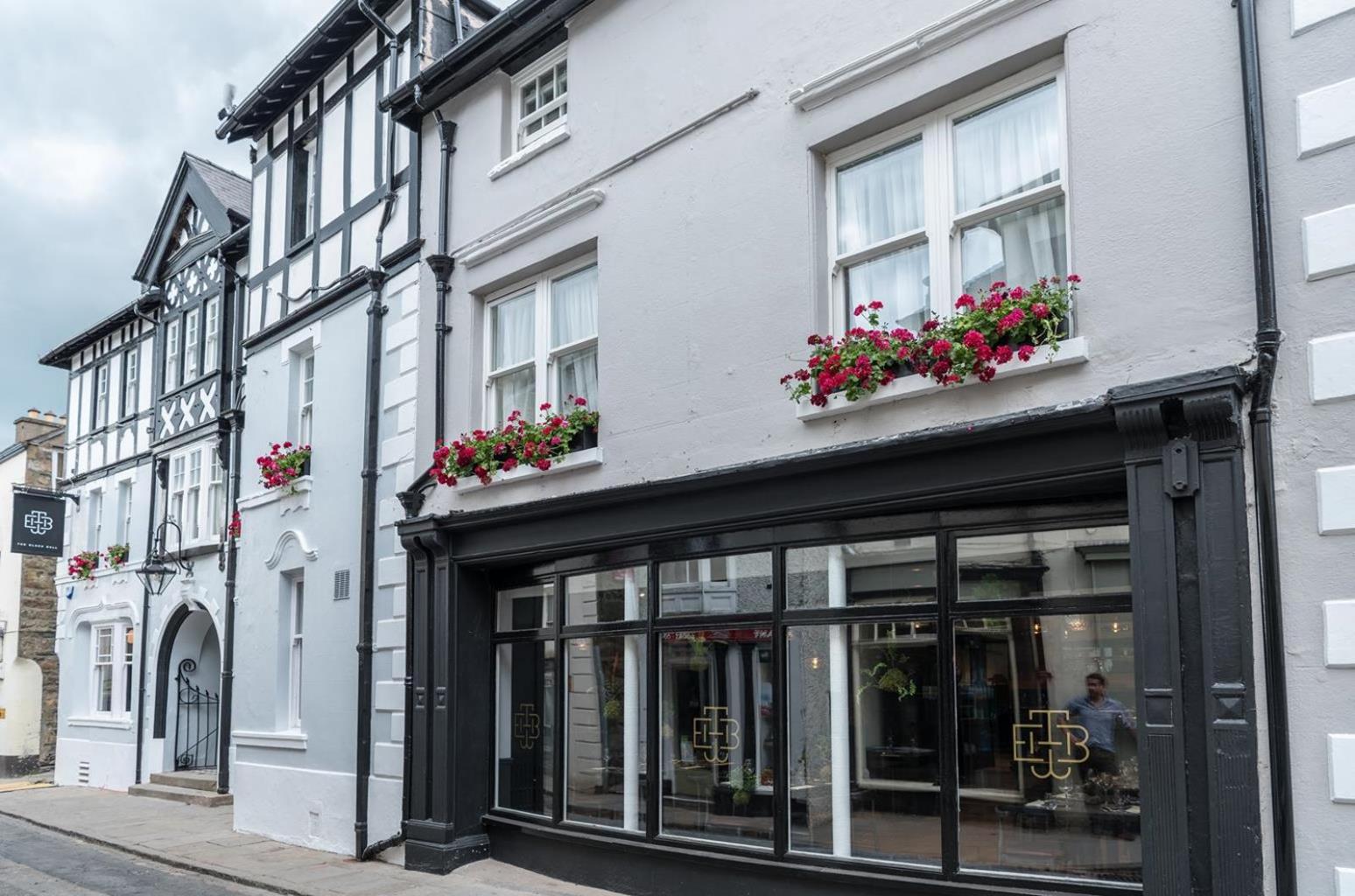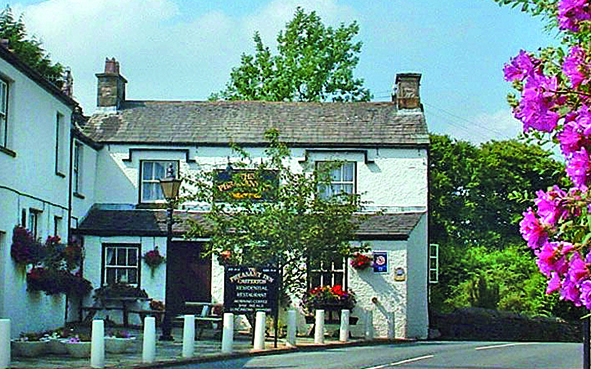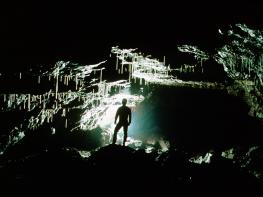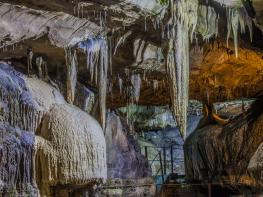Both cottages date from the 17th or 18th century and have been updated to provide cosy…
Discovering Dent and Dentdale

5.5 miles (8.8kms)
About the walk
Dentdale is sometimes called 'the hidden valley'. Unlike most of the Yorkshire Dales it looks west towards the Lake District, and at its western end the limestone landscape gives way suddenly to the rounded Howgill Fells. It seems to have a milder climate and it is more thickly wooded, too. Its 'capital', Dent, is one of the most individual villages of the Dales. Its dog-legged main street is lined with stone cottages that front directly onto the cobbles, or cluster around the church. It is a fascinating spot to explore, with the added benefit of good pubs and tea shops. It is also a busy place in the summer, with tourists and walkers attracted by the special feel of what comedian and walker Mike Harding has called 'the bonniest of all Dales villages'.
Man of the Rocks and the Terrible Knitters
Pride of place on the main street is a drinking fountain made from a huge boulder of Shap granite and simply inscribed 'Adam Sedgwick 1785–1873'. It is a bold and simple memorial to Dent's most famous son. Sedgwick was born in the Old Parsonage by the village green; he was the son of the parson, and the surgeon who delivered him was, perhaps prophetically, another Dentdale genius, mathematician John Dawson. Sedgwick went to Sedbergh School and on to Cambridge, where his study of geology, inspired by the rocks of Dentdale, made him among the foremost authorities on the subject. He eventually became Professor of Geology at Cambridge – the university's fascinating geology museum is now named after him. He returned regularly to Dent, where his brother and his nephew both succeeded his father as vicar. 'Whenever I have revisited the hills and dales of my native country,' he wrote in 1866, when he was 81, 'I have felt a new swell of emotion, and said to myself, here is the land of my birth; this was the home of my boyhood, and is still the home of my heart.'
As well as farming, the other great industry of Dent, well into the 19th century, was knitting. 'The Terrible Knitters of Dent', the poet Southey called them – intending a compliment on their speed and industry. Men, women and children all knitted – often while engaged at other work. Adam Sedgwick remembered that 'with a speed that cheated the eye they went on with their respective tasks. Beautiful gloves were thrown off complete; and worsted stockings made good progress. There was no dreary noise of machinery; but there was the merry heart-cheering sound of the human tongue.' Dent's woollen socks kept the feet of the British Army warm while they fought Napoleon.
Walk directions
Leaving the car park, go up the lane almost opposite, left of the Memorial Hall. Pass the green and keep straight on at the 'Flinter Gill' signpost. The lane becomes a stony track climbing through trees alongside Flinter Gill. Slowly the gradient eases and the trees peter out. Finally you reach a gate beside a seat high on the fellside. Go through the gate to a T-junction of tracks.
Turn right, signed ‘Keldishaw’. Follow the walled track, for 1.5 miles (2.4km), keeping straight ahead at the only junction. Reaching a tarmac road, turn right for 0.25 miles (400m) to the crest of a rise and a signpost on the left.
Go through the gate and follow the grassy track past small shakeholes to a ladder stile. Continue along a dilapidated wall to reach a track. This bears right below a slope scattered with trees, then contours round with great views of the valley, eventually descending through the yard of a recently restored farmhouse.
Follow the access track winding down the hill, crossing a couple of tumbledown walls before marker posts on the left lead you away from the track. Meet a stream, go left along the bank for a few paces, then cross a simple bridge of two stones. Climb the bank beyond and go straight ahead through a farmyard.
Continue down the farm track until it almost levels out alongside a line of trees. Turn sharp left by a large oak, through a waymarked gate. Walk diagonally down the field towards a ruined farmhouse smothered in elder trees. Pass to its right and continue down, soon joining a clearer track. Follow this downhill to reach a drive and go right a few paces to a lane.
Turn left along the lane. Follow it round to the right, then back left as it levels out in the valley bottom. Watch for a ladder stile by a barn on the left. Don't use this, but look for a signpost on the right, about 50 paces further on, with a plank bridge and stile just below it. From the stile cross the field to the river bank. Go right, following the river (and the Dales Way) upstream for about 0.75 miles (1.2km) to reach stone steps leading to a squeeze stile onto a stone bridge.
Go straight across the road and down more steps to continue along the riverside path, until it meets the road. Turn left; the path soon leaves the road again. Follow the riverbank through two more fields, then turn right on an obvious path. Go through two more fields; at the top of the second turn left, then go right on a track back into the car park.
Additional information
Tracks, field and riverside paths, some roads, 3 stiles
Moorland and farmland, with wide views of Dentdale
On lead in farmland and for riverside sections
OS Explorer OL2 Yorkshire Dales - Southern & Western Areas
Pay-and-display car park at west end of Dent
At car park
WALKING IN SAFETY
Read our tips to look after yourself and the environment when following this walk.
Find out more
Also in the area
About the area
Discover Cumbria
Cumbria's rugged yet beautiful landscape is best known for the Lake District National Park that sits within its boundaries. It’s famous for Lake Windermere, England’s largest lake, and Derwent Water, ‘Queen of the English Lakes'. This beautiful countryside once inspired William Wordsworth and his home, Dove Cottage, in Grasmere is a popular museum. Another place of literary pilgrimage is Hill Top, home of Beatrix Potter, located near Windermere. Tom Kitten, Samuel Whiskers and Jemima Puddleduck were all created here.
Much of Cumbria is often overlooked in favour of the Lake Distirct. In the south, the Lune Valley remains as lovely as it was when Turner painted it. The coast is also a secret gem. With its wide cobbled streets, spacious green and views of the Solway Firth, Silloth is a fine Victorian seaside resort. Other towns along this coastline include Whitehaven, Workington and Maryport. Carlisle is well worth a look – once a Roman camp, its red-brick cathedral dates back to the early 12th century and its 11th-century castle was built by William Rufus.
Nearby stays
Restaurants and Pubs
Nearby experiences
Recommended things to do
Why choose Rated Trips?
Your trusted guide to rated places across the UK
The best coverage
Discover more than 15,000 professionally rated places to stay, eat and visit from across the UK and Ireland.
Quality assured
Choose a place to stay safe in the knowledge that it has been expertly assessed by trained assessors.
Plan your next trip
Search by location or the type of place you're visiting to find your next ideal holiday experience.
Travel inspiration
Read our articles, city guides and recommended things to do for inspiration. We're here to help you explore the UK.














